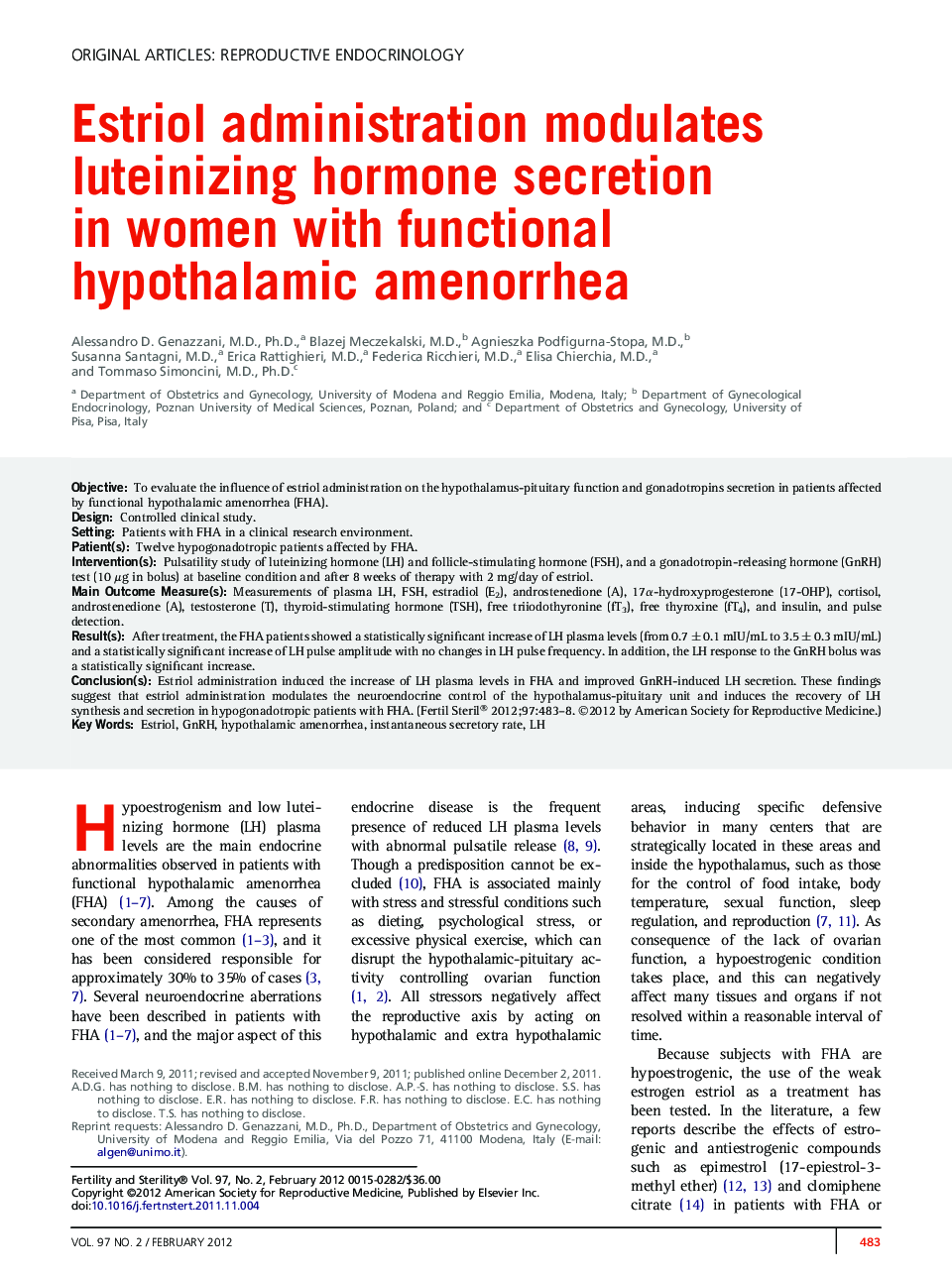| Article ID | Journal | Published Year | Pages | File Type |
|---|---|---|---|---|
| 3939167 | Fertility and Sterility | 2012 | 6 Pages |
ObjectiveTo evaluate the influence of estriol administration on the hypothalamus-pituitary function and gonadotropins secretion in patients affected by functional hypothalamic amenorrhea (FHA).DesignControlled clinical study.SettingPatients with FHA in a clinical research environment.Patient(s)Twelve hypogonadotropic patients affected by FHA.Intervention(s)Pulsatility study of luteinizing hormone (LH) and follicle-stimulating hormone (FSH), and a gonadotropin-releasing hormone (GnRH) test (10 μg in bolus) at baseline condition and after 8 weeks of therapy with 2 mg/day of estriol.Main Outcome Measure(s)Measurements of plasma LH, FSH, estradiol (E2), androstenedione (A), 17α-hydroxyprogesterone (17-OHP), cortisol, androstenedione (A), testosterone (T), thyroid-stimulating hormone (TSH), free triiodothyronine (fT3), free thyroxine (fT4), and insulin, and pulse detection.Result(s)After treatment, the FHA patients showed a statistically significant increase of LH plasma levels (from 0.7 ± 0.1 mIU/mL to 3.5 ± 0.3 mIU/mL) and a statistically significant increase of LH pulse amplitude with no changes in LH pulse frequency. In addition, the LH response to the GnRH bolus was a statistically significant increase.Conclusion(s)Estriol administration induced the increase of LH plasma levels in FHA and improved GnRH-induced LH secretion. These findings suggest that estriol administration modulates the neuroendocrine control of the hypothalamus-pituitary unit and induces the recovery of LH synthesis and secretion in hypogonadotropic patients with FHA.
